 Creation can be a painful process. Sucking out the nectar of an idea, refining it, fueling and bringing it to life. It hurts, it stings, it burns, but like honey, so sweet and golden and satisfying when it comes to fruition. That kind of pain feels so damn good, and it's extremely addicting.
Creation can be a painful process. Sucking out the nectar of an idea, refining it, fueling and bringing it to life. It hurts, it stings, it burns, but like honey, so sweet and golden and satisfying when it comes to fruition. That kind of pain feels so damn good, and it's extremely addicting.I've always fallen somewhere in-between plotting and pantsing. There's also the problem in that each story evolution can be a very different process. There really isn't a set methodology to my creation process. Can't help it - that's just the way it is.
I was reading a book the other day, and I think I've mentioned it before, "Uncertainty" by Jonathan Fields. The author speaks of the roadblocks we can hit in the creation process that can grate. He speaks of "leaning into uncertainty" but tempering that with ritual and "tangible manifestation of your commitment." He calls the manifestation, "process simulation." In other words, writing down and making the process more concrete, in order to move toward the ultimate completion of the goal. Follow-through.
When I read this chapter and saw that phrase, "process simulation," something clicked. I am a great maker of lists--store lists, errand lists, task lists. I kept morphing that word, "simulation," into "stimulation." Because that's what those lists really are--they stimulate the action.
When I contemplate the creation of an outline, it falls under that same heading. I don't think of the outlining process we learned in high school. That's not the outlining I do when I'm going through the creative process of brainstorming my story ideas.
I've often found that what will block me in pantsing, is the "idea" that I don't know where this story "could" end up. I'm not seeing a clear way to get to the end. For some stories that works, for others, beyond a short story, it can freeze me in place.
I've never thought of a story outline as being concrete. For me it represents sort of a parachute, where I can maybe direct sort of towards where I want to land, though I may decide not to land on an exact target spot, maybe near enough, in an even better place. But I have an idea about where I want to land, and hopefully it won't be in the middle of the ocean, with no life jacket to help me get to shore. I like that life jacket, I don't want to drown; I don't want my story to suffocate before it even gets a chance at life.
If I get tangled up in the story, if the characters aren't quite talking to me the way I would like, I can look back at that outline to ground me, before I end up on an unknown shore that could end up being stagnant and poisonous. I like that grounding--I like that sort of lifeline that keeps me from floating too far away from the original intent. That outline is one-dimensional, it is not a fully-fleshed out, complete animal. It's the bones--the skeleton which I will need to animate. And that's the writing process. It also helps with dealing with some of the early "red flag" warnings on story evolution.
Fields refers to this as "process simulation." I would change that just a bit and call it "process stimulation," because that's really what an outline should do. If I have an outline, a few words for each chapter, perhaps for each scene, I can sit down, I turn the editor off, and I just expand on those lines, until I have at least a certain number of words written. Editing comes later, it's getting the words down on paper that counts. I love the refashioning, the real fleshing out that comes later.
So for those that drag their feet on the word "outline," no problem. A more fluid, perhaps organic term might be "process stimulation." A "story stimulation guide--summary--or whatever." It equates to a manifestation of the muse. Something tangible. A story stimulation guide seems a bit less intimating than the word... o-u-t-l-i-n-e, which seems so...concrete, sort of set in stone and stagnating.
I like an organic process, but that can also be painful when you're looking at a blank screen.
There's another reason I like using a "story stimulation guide." It tends to preserve the forward momentum and keeps me from running down the road to the shiny object of a new story forming, it keeps me anchored to the current project. I tend to have a very fertile imagination and so many characters and storylines running through my head that sometimes that can be actually destructive to the working process. Having that "story stimulation guide," is a lifeline to narrowing my focus, bringing me back to the story I want to finish. It's very frustrating when you have all these characters inside your head trying to get you to focus on them instead of the current process. Some of them can be pretty aggressive. It ends up turning into debilitating procrastination.
A "story stimulation guide," means productivity. This relates to the business side of writing.
My foundational tools, stacks of 4x6 index cards (colored and white), pencils, Ywriter software (which is free). Once I have my "story stimulation guide" completed, I transfer each chapter to a white index card. If I have scenes within the chapter, those go on colored index cards, marked by scene POV. Add a few blank index cards for additional notes. I transfer the information to my Ywriter software. As I said, this is an organic process. This is only the beginning.
This makes the "story stimulation guide" portable, and because it's in pencil, easily altered, lightweight, shoved into a storage baggie, and easily fits into my purse.
It's not awfully techie, that comes later. This is the organic creative process which will help to make the writing come a bit easier when I actually sit to write the story.
This is why I can usually work on more than one story at a time. I can be writing one story (because I have my "story stimulation guide") and be preparing a guide for the next one. And somehow it seems to appease the hoardes of characters running around in my head not related to the current project who have to wait their turn.
It's all organic, the story is always in motion, ideas building one onto the other. That's exciting.
So, remember that term -"story stimulation guide." And thank you to Jonathan Fields for stimulating that thought process and helping me "lean into uncertainty."

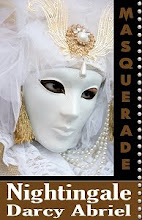
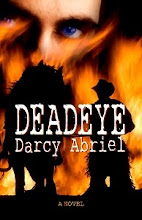

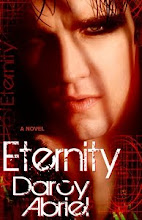
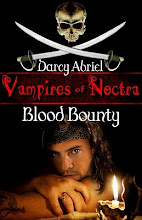
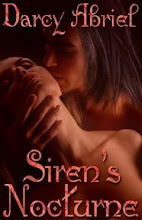
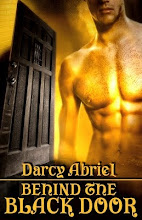





No comments:
Post a Comment